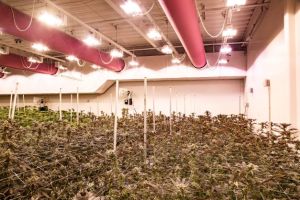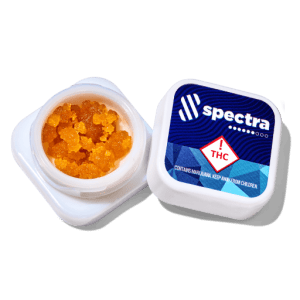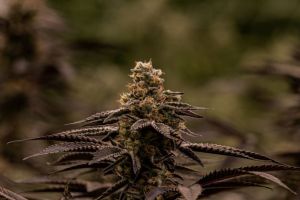Native Roots’ COO Beth Kotarba on Sustainability and the Single-State Business Model
ColoradoMarijuana Industry News February 14, 2023 MJ Shareholders 0

New industries do not emerge from the primordial muck of a federal prohibition every day, and when they do the immutable law of government malaise predictably dictates that there will be years of market chaos before something resembling a functional industry takes shape. In the interim, everyone is left wondering how companies are supposed to survive, and which ones will make the correct choices that ensure they do. It’s Hunger Games: Cannabis Version, and the games are underway. In such an environment, MSOs get most of the attention as they move their pieces about the cannabis chessboard that is the country (and the world), but maybe just as much consideration should be given to those companies, like Colorado-based Native Roots, that held off national expansion in the name of single-state growth and a sustainable business model.
A Colorado cannabis fixture since 2010, Native Roots began life as “a small, 17,000 sq. ft. cultivation and extraction facility that produced products for The Dandelion and Native Roots Apothecary medical dispensaries,” per its website. “Our growth accelerated dramatically in early 2013 after these two retail experiences joined forces to form Native Roots.” Today, Native Roots is a vertical entity operating 20 dispensaries throughout the state, making it one of Colorado’s largest cannabis retailers and wholesalers.
 Cannabis Business Executive spoke recently with Native Roots COO Beth Kotarba about how Native Roots addresses the many headwinds that come with operating a vertically integrated cannabis company at scale, what it has done to ensure its survival, and the state of cannabis in Colorado. Kotarba also briefly addressed the interminable legal battle between co-founders Josh Ginsberg and Rhett Jordan against co-owner Peter Knobel and his company, BrightStar LLC, saying it has not impacted the operations of the company at all.
Cannabis Business Executive spoke recently with Native Roots COO Beth Kotarba about how Native Roots addresses the many headwinds that come with operating a vertically integrated cannabis company at scale, what it has done to ensure its survival, and the state of cannabis in Colorado. Kotarba also briefly addressed the interminable legal battle between co-founders Josh Ginsberg and Rhett Jordan against co-owner Peter Knobel and his company, BrightStar LLC, saying it has not impacted the operations of the company at all.
Kotarba started at Native Roots as Director of Operations in 2016. A consultant by trade, she came to cannabis as many do via a route she could not have previously envisioned. “I joined Arthur Andersen right out of college,” she said of her career path. “I worked in the consulting arm, and that’s kind of how I grew up, through them. When Arthur Andersen’s demise came about, we were all absorbed by Hitachi Consulting, and I did that for a number of years. Then I worked at a smaller consulting firm, where I was running the process-improvement and business intelligence areas. I was in consulting 30 years give or take before coming over here.”
Kotarba worked in a lot of different industries, along the way establishing a diversity of skill sets in large, complex project management systems, ERP implementation, and performance reporting. “A lot of process work,” she said. “That was my background.”
Serendipitously, a colleague she had worked with went to work for Native Roots. “I was just so fascinated by what he was doing, and the fact that there was this industry that was brand new,” she recalled. “I thought it was great, so he and I started talking. I was already getting a little restless, looking for something different to do, and he needed someone to run their cultivation operations.
“Of course, I didn’t know anything about marijuana or cultivation,” she added. “I was supportive of it and didn’t have any issues, but I certainly was not an expert in the field.” That turned out to be the consensus. “Through a long process of figuring out if it was going to work or not for both of us, we decided that I probably had more to bring to the table than knowing how to grow the plant per se, so I came on as the Director of Operations. I pretty much just had cultivation at that time, so everything from the grow through packaging to getting it out to our retail stores.”

I asked Kotarba why the company made someone with no cultivation experience the Director of Operations. “They were looking in agriculture, and in all the obvious industries that would have had a more comparable skill set,” she said. “But they weren’t finding a good fit for the culture in cannabis. I don’t know if that resonates with you, but having been in it a few years, I look at that now and I’m like, you can have all of the chops in the world around the specific processes, but there’s a culture that you have to embrace as well, where you’re willing to bring your team along and you have to be flexible.
“What I had was a lot of management experience,” she added, “and I had worked with Ryan [Browne, Native Roots current CEO] enough that he knew my style. I also had a lot of success building teams, structuring organizations, and understanding key metrics. How do we measure this, and how are we accountable to measuring that?”
The decision to hire her was a little odd even for her. “Being in consulting, I asked myself the same thing,” said Kotarba. “I talked to my husband about it a lot, but I always said, I know what I don’t know, so I’m not going to be telling these guys how to grow cannabis. I am going to help them do it better. I am going to look at the processes and look at how they’re organized, and quite honestly, it’s been a really great fit.
“I don’t know if it was a little bit of luck in that they had really good people in place, because some of my key folks right now were already here, like my director of cultivation,” she added. “But it worked well. I was willing to say, ‘I don’t know what that is or how to do it, but you tell me,’ and on the flip side, I helped them in assessing their talent and putting structures in place, saying, ‘We have to measure that, and we have to set targets for what we’re growing. We can’t just willy-nilly do it.’ And it worked!”
The Growth Years
The last six years or so had been ones of steady growth for Native Roots as it added stores and market share to its vertical footprint instate. At first, the pace of expansion was consistent with the exuberance of the times. “That first year we were rolling our retail, growing at a rapid pace, and we had not yet built out the entire cultivation facility,” Kotarba said of her introduction to the business. “We were still opening up bloom rooms and grow rooms, and the demand was, as you can imagine, out of the ballpark. So, the focus when I came in – and it’s interesting to look at it now because it’s changed so much – was to grow as much as you can as fast as you can, get those plants in the rooms, and build your plant counts with compliance.
“And we had the ability to grow as many plants as we could, though you have to tier-up plant counts,” she added of Colorado’s tiered licensing program. “Having a lot of plants and getting your tier-count up from a compliance perspective were really big. First and foremost was to put out as much weight as you can, and I remember a couple times, when something went awry and my guys came in and said, ‘I don’t know if we’re going to be able to store orders this week,” it was like, ‘Oh, my God.’ We figured out how to do it, but we went through periods where it was challenging just to meet the demand of our own stores.”
 Native Roots met the growing demand for cannabis by building out its cultivation and processing capabilities. “Our cultivation facility is now about 180,000 square feet,” said Kotarba. “We grow there, but we also have a state-of-the-art processing facility. We also have a smaller grow facility in Denver, kind of a satellite, where we focus on R&D, new strains, boutique brands.”
Native Roots met the growing demand for cannabis by building out its cultivation and processing capabilities. “Our cultivation facility is now about 180,000 square feet,” said Kotarba. “We grow there, but we also have a state-of-the-art processing facility. We also have a smaller grow facility in Denver, kind of a satellite, where we focus on R&D, new strains, boutique brands.”
The company recently released a high-end flower line and uses the smaller Denver facility to do that sort of product development, which is more difficult to do in the larger facility. The high-end line takes its place at the top of the company’s three new Label Lines. “We just rebranded our flower to Green Label, Onyx Label, and Gold Label,” Kotarba explained. “We wanted to get ourselves positioned to have a higher-end, boutique flower that would compete with some of the boutique growers out there.”
The Lines target a range of price points, with Green the affordable choice, Onyx of elevated quality, and Gold denoting their top-shelf flower. “The Gold Label consistently sells out,” said Kotarba. “As a limited-quantity type of product, we’ll do drops of it as it comes out, so when it hits the stores it’s gone pretty fast.”
Native Roots also produces an array of concentrates and vapes. “We have two lines, Spectra and Revel,” said Kotarba. “Spectra is our ‘power to the plant’ line, which is about staying true to the plant. Those are our concentrates – shatter, wax, and our vape products, which include distillate, co2, and we have live resin vapes as well. And then Revel is a line that includes our fun, flavored vapes.
Native Roots dispensaries carry a plethora of third-party brands as well, of course. Edibles brands include Wana, Keef, Wyld, and Koala, to name a few. “We obviously also carry other brands in our stores,” said Kotarba, “but we are working on getting a little bit more coverage of our products from a wholesale perspective. Not so much our flower, but our Spectra and Rebel lines, which we sell wholesale across the state as well as in our stores.” She added they are currently sold in 80 to 100 stores, “but I think we have a lot of room for growth there.”
A Sustainable Business Model
Similar to other states that legalized cannabis early, Colorado is feeling the stress of a saturated market still locked in a netherworld of federal illegality and the penalties that come with it. Curaleaf just announced its draw-down from the state, and from California and Oregon, basically arguing that it was too much trouble (and expense) for too little gain.
“The environment is tough,” agreed Kotarba. “It’s the supply chain issues that came in during the pandemic, the change in demand, a tough oversupply, all of it. Business went crazy during the pandemic when people were at home, and now it’s leveled off. People were producing like crazy, and for folks like us that are vertically integrated, supply in the market right now is much higher than demand, so price-per-pound is down. We’re fortunate in that we have 20 retail stores as outlets for our products, which is huge and helpful to us, but for folks that are just growing flower, it’s harder for them to get in the door everywhere, and the oversupply is a challenge for everyone.
“I think the smaller retailers are feeling that as well,” she added. We’ve had some regulation changes that have impacted our consumers and the physicians, and it’s put a lot of pressure on the cannabis industry and demand. So, it’s tough, and the market is down here. At Native Roots, we watch what the industry trend is, and we have managed to do better than that, which is great, but we are seeing some of the same challenges as everybody else.”
Specifically, she added, “We’ve been able to maintain our market share and our revenue has stabilized. It’s not what it was in 2020 or 2021, but when you look back to 2019 and other years, we’re still growing, and our customer-base has stayed pretty good, so we’re feeling like we’re doing well in that regard.”
But Kotarba said she expects tough sledding for the remainder of the year. “From where we sit, we think it’s going to continue probably through 2023, and we’ll see some corrections in the market in terms of the people that don’t have as strong a business, and we likely might see some folks not make it,” she said. “Because we see it being flat or small growth, the key for us is to plan accordingly, have realistic revenue projections, and get our cost structures in alignment with that. We feel pretty good about where we stand, and we’ve got some really great business practices in place that are allowing us to kind of flex during this time, and plan on a little bit flatter growth.”
That does not mean no growth, though it will remain at home. “We continue to try to grow in our state,” said Kotarba. “We’re focused on Colorado and where we can get a new license, maybe open a couple of new stores where it makes sense, and fund that out of our cash flow and our profits, which we’ve been able to do successfully for the last couple years. I think it is really that discipline with our spending that keeps us in line with costs and revenue.”
I noted that the times do seem to support the wisdom of more conservative and sustainable business models like a single-state strategy. “I think what we’ve been doing at Native Roots has been really smart, just making ourselves as strong as we can be in our own state,” said Kotarba. “Growth is always exciting, of course, but when I look at it and I talk to my team, I’m like “We are in a position to make this business as strong and scalable as possible, so that we are positioned when the laws are more favorable to us.
“We don’t know when that’s going to be,” she added, “and some of the setbacks have been really discouraging, like with SAFE banking, but we continue and luckily we have a great executive team and we’re focused on continuing to increase our capabilities and make our operations better. And we continue to invest in those things, so we are building a great business that allows us to function when the market is moving up and down, but also positions us to be strong when things open up. For me, that’s exciting. I love what we’re doing, and it feels pretty good right now.”
 Such discipline often comes at a cost. Had Native Roots had to downsize or cut staff? “We have not made any concentrated efforts on reducing payroll, which is really fortunate, and our vision is to work our way through this,” replied Kotarba. “We have had a very disciplined approach to spending for the last few years where we made it a strategy to fund our growth through our cash flow. We have a good finance team, and we put a lot of discipline around our big capital spends with an investment committee, where we look at it, and we put business cases together, so when my team comes in and says, ‘Hey, we need to go buy this piece of equipment,’ it’s like, ‘Okay, what is it going to do for us, and let’s make sure that this is a wise purchase that either does cut our spend because of productivity or increases our output so that we can do that more effectively.
Such discipline often comes at a cost. Had Native Roots had to downsize or cut staff? “We have not made any concentrated efforts on reducing payroll, which is really fortunate, and our vision is to work our way through this,” replied Kotarba. “We have had a very disciplined approach to spending for the last few years where we made it a strategy to fund our growth through our cash flow. We have a good finance team, and we put a lot of discipline around our big capital spends with an investment committee, where we look at it, and we put business cases together, so when my team comes in and says, ‘Hey, we need to go buy this piece of equipment,’ it’s like, ‘Okay, what is it going to do for us, and let’s make sure that this is a wise purchase that either does cut our spend because of productivity or increases our output so that we can do that more effectively.
“We’ve been doing that for the last couple of years,” she added, “and that that has really helped us. Also, as is natural in the industry and because we’ve been a big player, our folks have good experience and some of them have gotten other opportunities. So, as those things happen, it’s just really looking at the organization and asking, ‘How do we adjust now, and can we provide bigger opportunities to our existing folks that are here?’ So, we’ve been more about back-filling, but we haven’t done any cutting and we don’t have any plans to do that. We feel like our budget for the next year and our revenue match up, and we should be in good shape with what we have.”
Regulations are also an ongoing headache that seems to come in waves, said Kotarba. “The first few years I was there, they were continually changing things and things still change, but the pace of the change has slowed,” she explained. “There’s a big focus on consumer safety and health and all of the things that are there for a reason and with good intention, but they are also very costly. And as the supply of cannabis has gotten bigger and prices have come down, these costs have become proportionately high – for testing, and for a lot of requirements around packaging – and all of these things make it hard for operators when you marry it up with all the other things we are not allowed to do, like the taxes that we pay with 280E, and the fact that we can’t do banking like everyone else, so it’s a tough set of circumstances to stay profitable. Also, a lot of jurisdictions are trying to get as much tax money for themselves out of it, and they want to continue to tax the consumer, so the customer gets hit up a little bit as well.
“But as far as regulations go, those have been a tough thing for us to deal with as they change,” she added. “We do have a lot of new legislators that have come into the picture in Colorado, and we actually look at that as an opportunity to educate. I think a huge component as we go through these times is to continue to educate our legislators about our industry and what we do, and also educate the consumer to continue to bring new people into our stores to see what we’re doing and understand that we are a business just like everybody else. I think if we do that, we will continue to get new people in our stores, which is really key to our customer experience through all of this. To continue to grow, it is critical to focus on your customer and what they want right now and to make sure we’re meeting their needs and providing a good experience for them.”
Focused on Quality
On Curaleaf’s decisions to vacate Native Roots’ native state, Kotarba was admirably non-competitive, viewing it through an industrywide lens. “Really, we were all like, ‘Wow,’ she said. “Really surprised, and while I suppose there’s always opportunity for us there, I think a bigger feeling is that it makes you feel bad that it’s come to the point where folks are starting to either shut down or pull out of the market. Because a lot of people have worked really hard to get there, and so it never feels good when you hear these things, and especially a player like Curaleaf in a market like Colorado.
“We did not carry their products, because our Rebel and Spectra, mostly, are competing brands,” she added. “We don’t generally carry competing products in our store unless there’s something unique about them, like the consumer or customer really wants it.”

Our time winding down, I asked about the internal feud among the owners, and the extent to which it affected the operation of the company, if at all. “What I would say to that is Native Roots is not a party in the owners’ dispute, and the majority owners aren’t involved in our day-to-day operations of the company,” she said. “So, what’s going on there has not impacted our operations and the success that we’ve had. We like to keep those separate because, like I said, Native Roots isn’t directly a party, so we just keep our noses down and do our thing, and we’ve been pretty successful doing that.”
Kotarba reiterated the company’s reinvigorated focus on quality and customer service. “I would say one thing that we are excited about that we are doing – and this points back to our customer experience – is that we are in the midst of a campaign where we’ve got our new flower lines, and we are starting to focus the customer experience on the product with what we’re calling our new matrix; looking at our products and the experience that our customers can expect with them.
“Our strains have a mood associated with them,” she added. “We’re really excited to change the narrative around potency and when the customer comes in, asking them what sort of experience they are looking for, and focusing on that to provide a better customer experience. That’s something we’re really excited about, and we are putting it out there right now on our social media.
The message is one of quality. “We’ve also worked really hard in the last year to put into place a sales and operational planning process that has helped us better understand demand so that we can adjust our supply to that, because when you’re working with plants that can be really hard to do,” added Kotarba. “As I mentioned, in the first years it was grow as much as you could, and we realized that since we don’t need to produce in that scale anymore, we can adjust our processes to focus on quality.
“But I also think it’s just good for our product and good for our customer that we said, ‘Okay, now we don’t have to pump out as many pounds, but what we do create and grow should be the best that can possibly be,” she said. “That’s something I’m really proud of doing because it takes a lot of time. When you’re growing plants, it’s a long cycle, so we really focused on that and the discipline around good sales and operational planning, and I think it has been a big determinant of why we have been able to adjust ourselves and do well.”
Before we hung up, Kotarba wanted to underscore Native Root’s dedication to quality over the years and how it is evolving to meet demand. “We’ve always had a focus on quality, of course, but when you grow in the scale that we do, you cannot do some of the things that the smaller grows can do in terms of very repeatable processes,” she said. “So, when I say we are focused on quality, we actually took some automation out of our processes. We had gotten so good at them that we were able to compensate and take some automation out that was not as good for the plant and put in more of a hand-touch. That gets back to our Gold and Onyx Labels, which are hand-trimmed and hang-dried. So, while automation was key for us to gain efficiencies and to get our processes running, we are now able to implement some of the more boutique type of techniques and do it with the same resources we used before. That’s where our quality has come into play, and it’s been really fun to do.”
MJ Shareholders
MJShareholders.com is the largest dedicated financial network and leading corporate communications firm serving the legal cannabis industry. Our network aims to connect public marijuana companies with these focused cannabis audiences across the US and Canada that are critical for growth: Short and long term cannabis investors Active funding sources Mainstream media Business leaders Cannabis consumers











No comments so far.
Be first to leave comment below.